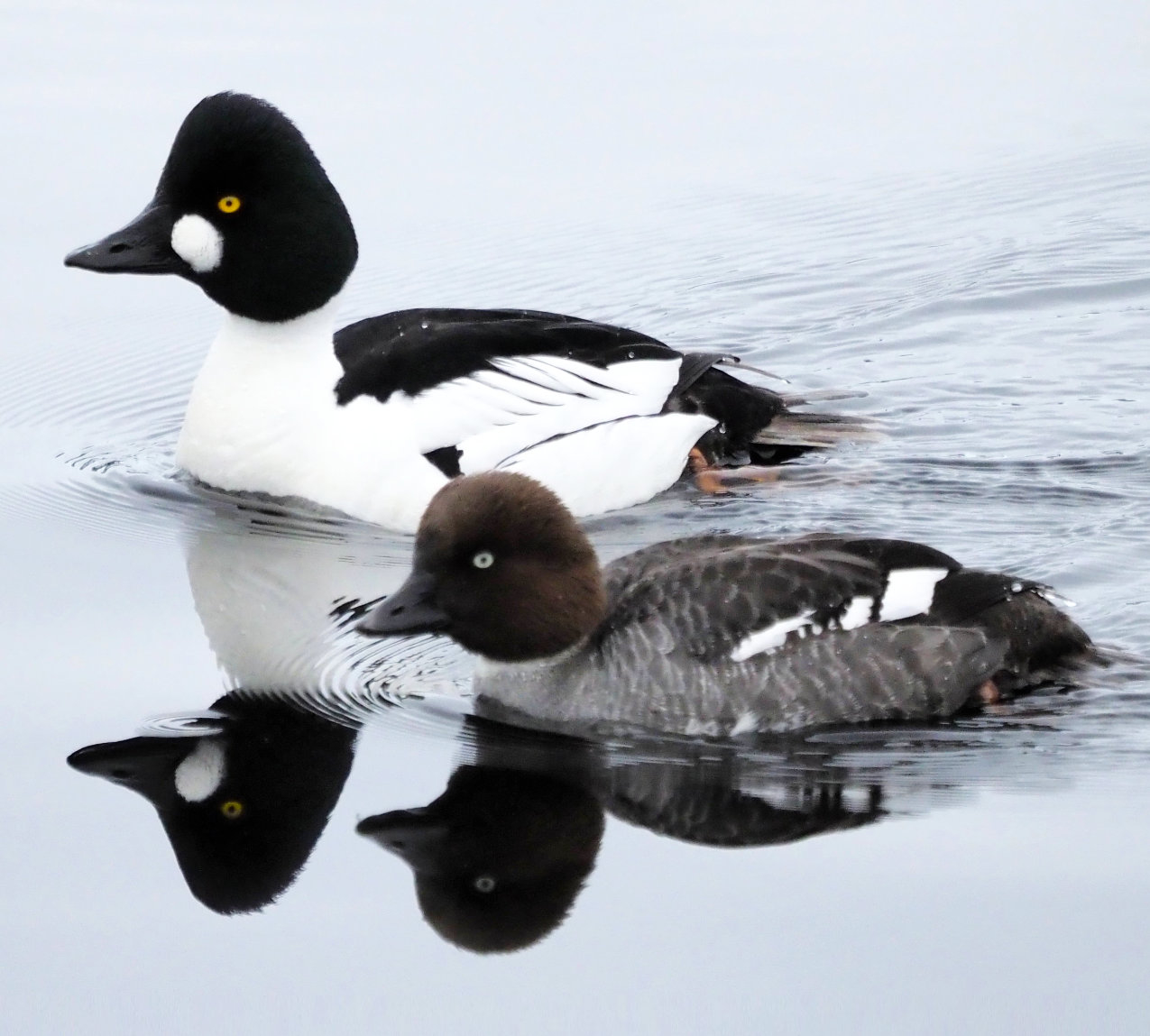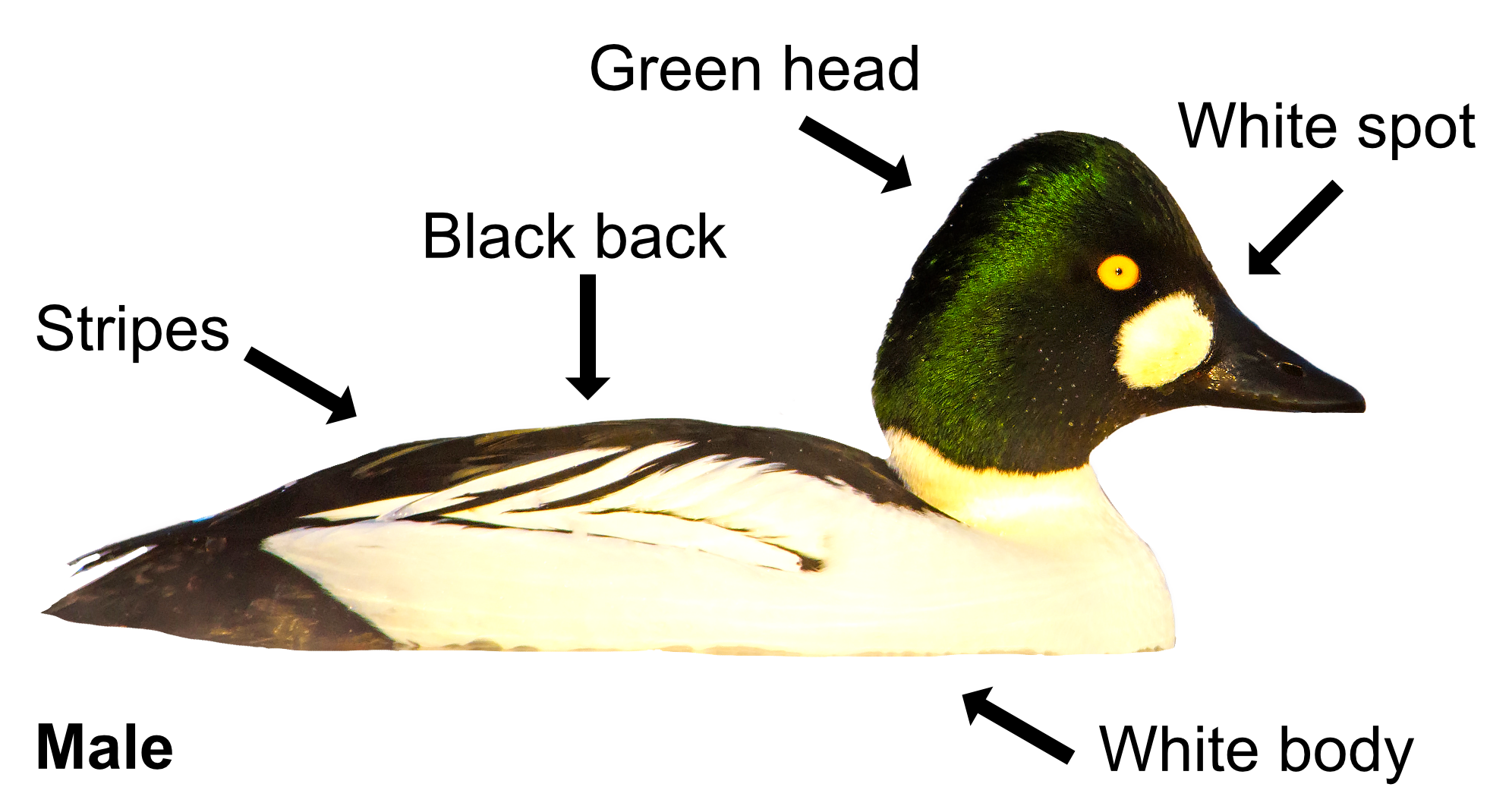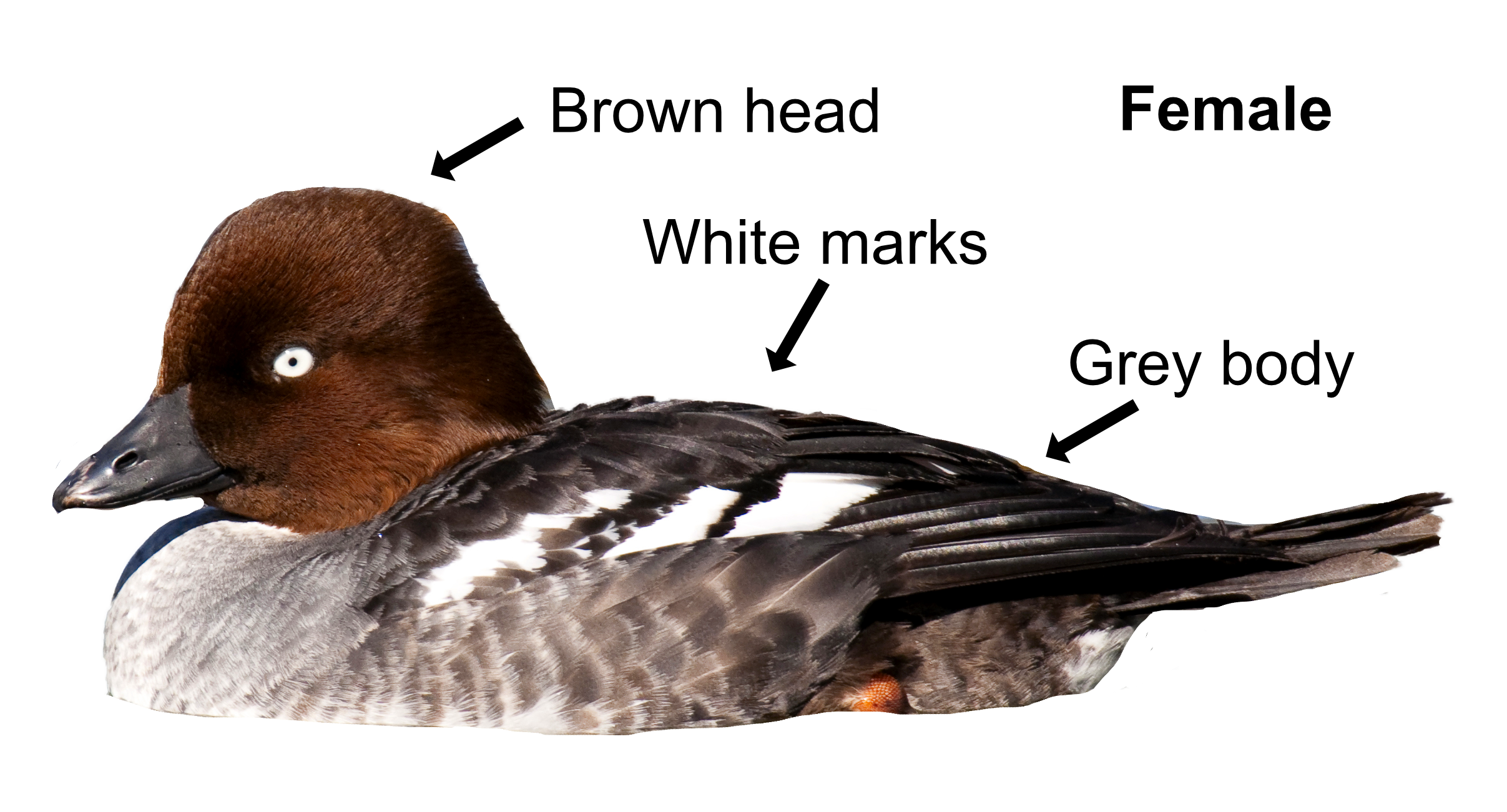
The Goldeneye is a scuba diving duck that can hold its breath for a heck of a long time. It is mainly a winter visitor arriving in late August and leaving again in March, although a few now stay over the summer and nest in Scotland. During the winter, small groups of Goldeneyes are mainly found on the coast, on large inland lakes and reservoirs. They get their name from their beautiful golden eyes, which are really hard to see.

The male Goldeneye has a white body with a dark green head, a black back and black and white stripes along his sides. He has a big white spot on his cheek, which is much easier to notice than his golden eye. The female is grey with a brown head, white collar and white marks on her wings. Young males resemble mum but with the white spot on their cheeks. They all have dark bills. When flying, Goldeneyes have an inner white wing patch and black wing tips. They are fast fliers and their wings ‘whistle’ as they fly. Goldeneyes are mainly silent, only growling during courtship.
They often forage in flocks, diving simultaneously to find molluscs, crustaceans and insect larvae, by turning stones underwater. They will also eat plants like pondweed.

Goldeneyes are aggressive, territorial ducks with an elaborate courtship display. When females are nearby, the males frequently display by stretching their heads backwards against their backs to expose their white breasts, then popping their heads forward and growling a loud, double whistle sound that can be heard up to a kilometre away! The ladies like a good growler, and pairs get together within the winter flocks. By April, the happy couples have moved north to nest in conifer forests beside lakes and rivers. Their nest is usually a hole in a tree, though they will also use nest boxes. Initially, dad will defend his territory for a week or so then he abandons mum to do the incubation all on her own. The 8-11 pale green-blue eggs hatch after 29 days. A day later, the young chicks jump from the nest and mum takes them to a rearing area where they can swim and dive. The youngsters feed themselves and can fly at 57 days, soon becoming fully independent.
About 200 Goldeneye pairs nest in northern Britain with 30,000 more coming here to overwinter. Goldeneyes first nested in Speyside, Scotland as recently as 1970.
Their Latin name is ’bucephala clangula’ where ’bucephala’ means ‘bull-headed’ from the Ancient Greek ’boukephalos’ derived from ’bous’ for ‘bull’ and ’kephale’ for’ head’, and refers to its strange head shape. The ’clangula’ is from the Latin ’clangere’ ‘to resound’ as the Goldeneye’s call is so loud.